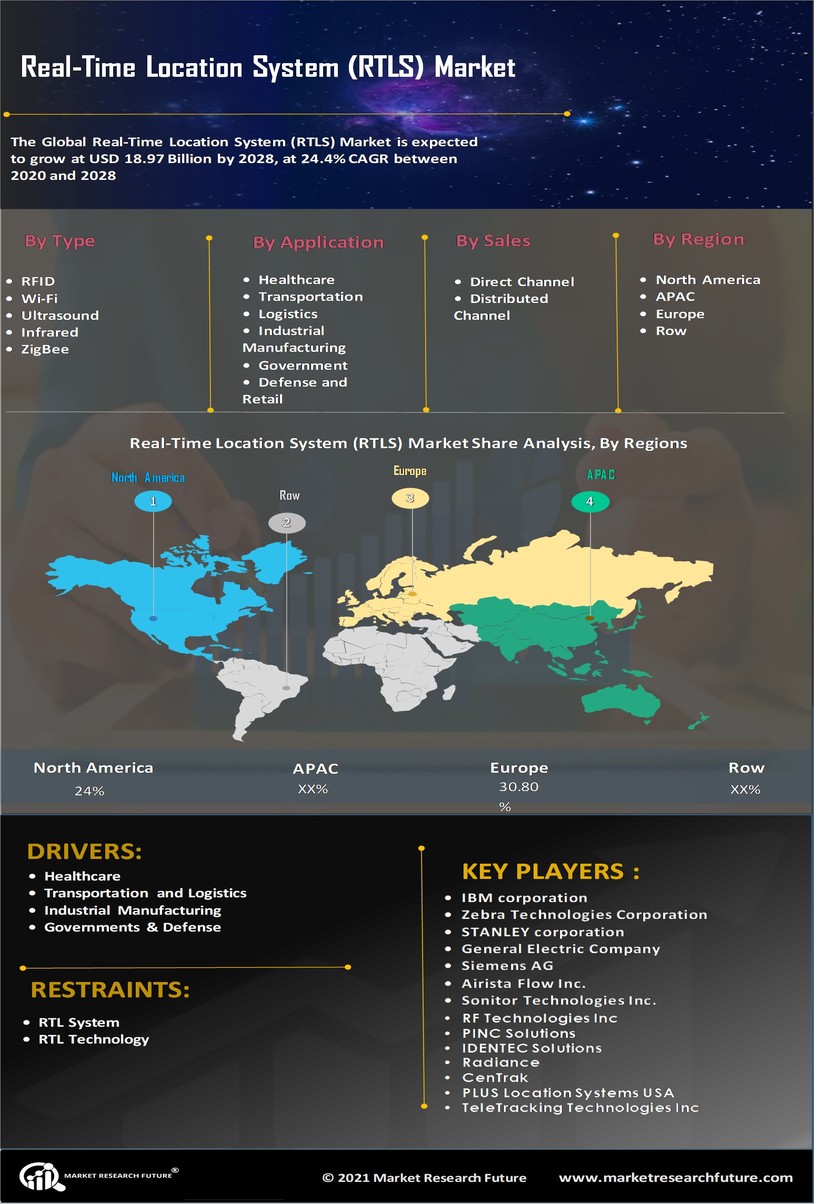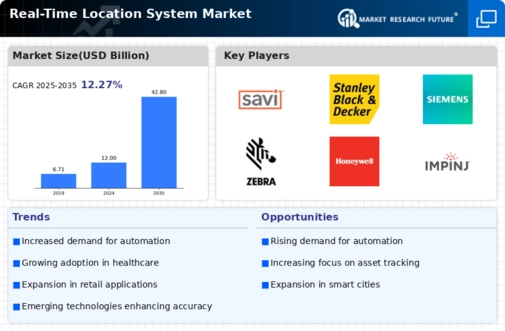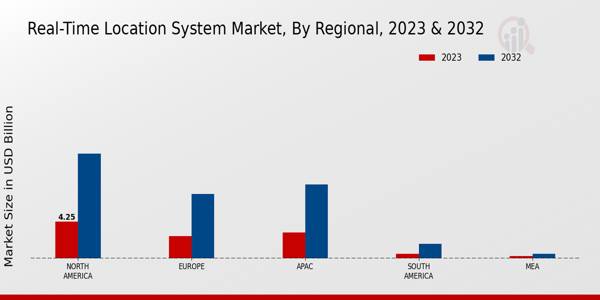Market Growth Projections
The Global Real-Time Location System Market Industry is projected to experience substantial growth in the coming years. With a market valuation of 12.0 USD Billion in 2024, it is expected to reach 42.8 USD Billion by 2035. This growth trajectory indicates a compound annual growth rate (CAGR) of 12.28% from 2025 to 2035, reflecting the increasing adoption of RTLS across various sectors. The expansion of smart technologies and the growing need for real-time data are likely to drive this market forward, presenting opportunities for innovation and investment.
Advancements in IoT Technology
The integration of Internet of Things (IoT) technology significantly influences the Global Real-Time Location System Market Industry. IoT devices facilitate seamless communication and data exchange, enhancing the capabilities of RTLS solutions. As IoT technology continues to evolve, it enables more precise location tracking and data analytics. For example, smart sensors deployed in warehouses provide real-time insights into inventory levels and asset movements. This technological advancement is likely to drive market growth, as organizations seek to leverage IoT for improved operational efficiency and decision-making.
Rising Adoption in Retail Sector
The retail sector's increasing adoption of RTLS solutions significantly impacts the Global Real-Time Location System Market Industry. Retailers utilize RTLS to optimize inventory management, enhance customer experiences, and streamline operations. For example, location-based marketing strategies enable retailers to engage customers with personalized offers based on their in-store movements. This trend is expected to drive market growth, with a compound annual growth rate (CAGR) of 12.28% anticipated from 2025 to 2035, as retailers seek innovative ways to improve operational efficiency and customer satisfaction.
Growing Demand for Asset Tracking
The Global Real-Time Location System Market Industry experiences a surge in demand for asset tracking solutions across various sectors, including healthcare, retail, and logistics. Organizations increasingly recognize the value of real-time visibility into asset locations, which enhances operational efficiency and reduces losses. For instance, in healthcare, hospitals utilize RTLS to track equipment and improve patient care. This growing demand is projected to contribute to the market's expansion, with a valuation of 12.0 USD Billion in 2024, indicating a robust interest in asset management technologies.
Expansion of Smart Cities Initiatives
The Global Real-Time Location System Market Industry is poised for growth due to the expansion of smart city initiatives worldwide. Governments are investing in smart infrastructure that incorporates RTLS for efficient urban management. These systems facilitate real-time monitoring of public transportation, traffic flow, and emergency response. As cities become more interconnected, the demand for RTLS solutions is likely to increase, contributing to a projected market value of 42.8 USD Billion by 2035. This trend reflects a broader commitment to leveraging technology for enhanced urban living.
Increased Focus on Safety and Security
Safety and security concerns are paramount in various industries, propelling the growth of the Global Real-Time Location System Market Industry. Organizations are increasingly adopting RTLS to enhance safety protocols and monitor personnel in real-time. For instance, in manufacturing, RTLS can track worker movements to ensure compliance with safety regulations. This heightened focus on safety is expected to contribute to the market's growth trajectory, as companies prioritize the well-being of their employees while optimizing operational processes.













